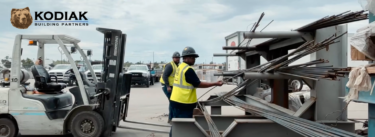Value-stream mapping is a critical step of any lean transformation. If said transformation happens to be in the public sector, though, there are some signficant hurdles to overcome. One of the most significant barriers is the difficulty of identifying the value in the public sector, which, if not properly done, can bring the entire mapping process to a halt. Gavin Martin has seen this problem many times over – here is his take on it:
I understand that you often see a lack of value-stream mapping in government because people find it difficult to identify the value. Why is it so difficult to define value in government?
There are many reasons, but it’s mainly because so many people are involved. There are competing interests, competing expertise and different perceptions and agendas. A change of agency leadership often means a change of direction; this discontinuity produces thrash, leaving in its wake abandoned initiatives. The endurance of even the most engaged and innovative people is tested.
To you, what does value mean for a government agency? What is the definition of value in that context?
Each agency has a mandate, a purpose for being – that is their mission. Agency goals should align and support this mission. These goals represent the value produced by that agency. Goals are then deconstructed into SMART objectives. We often see too many goals pursued rather than a few, impactful goals.
What are some common mistakes that you see in misidentifying value?
Well like I said, there’s discontinuity in the production of value for agencies due to transient leadership, fluid priorities, fiscal constraints, and legislative mandates. These challenges are not new, will continue, and must be accommodated. The annual strategic planning window allows for leadership the opportunity to check the efficacy of activities in producing expected results, adjust assumptions based on this retrospection, plan countermeasures to course-correct and execute a roadmap in the next fiscal year.
My company provides support for each stage of the process, so we have a pretty good line of sight into the struggles. For example, we often see people go for generic definitions of value such as “getting better.” You want to avoid goals like “providing value,” because that’s wide open. Unless you define what that end is so specifically that you can measure, “Are we there yet?” you’re never going to get there.
I think the root cause is that government agencies often don’t go through the right exercises trying to nail down what a value is. It’s in that decomposition. It’s in that walking backwards from the end-state that you get back to the beginning. In value-stream mapping, what is it that you’re producing? What is “it” that you’re providing? You start at the end, and then you walk that stream backwards. How do you know when you have “it?” What’s the last step in this process? What’s the second-to-last step? What’s the third-to-last step?
In doing that, everything that’s involved becomes painfully clear. By taking inventory of all the processes and procedures producing this value, you now have a better perspective on the holistic value stream. Only then can you really start to determine what is waste, what is unnecessary, what can be standardized, what is ad hoc, and seek to improve the process.
Can you think of a time where you had to work through this problem first-hand, where you had to help somebody find the value before they could start value stream mapping?
Sure. When I was at a smaller agency in Washington, DC we were subject to sequestration and continuing resolutions year after year when Congress did not pass the budget. Our systems got older, software got older, but the demands on the agency only increased. This was indeed a challenge that has often been captured in the soundbite: “doing more with less.” We reinterpreted the problem as: “doing only the right things, at the right time, and only as much as needed.”
We wanted to continue to support a long-term client as best as we could, and we wanted to do interesting and innovative work. In order to do that, we had to wring out the inefficiencies inherent in the program – not because we were going to cut them or we didn’t want to cut them, but because there was a risk that we would have to cut them.
In order to do the things that we wanted to do, that the government wanted to do, the cool initiatives (e.g., big data and analytics, mobile), we knew we couldn’t afford it without cutting something – until we did value stream mapping.
In order to do the things that we wanted to do, that the government wanted to do, the cool initiatives (e.g., big data and analytics, mobile), we knew we couldn’t afford it without cutting something – until we did value stream mapping. It was only through value stream mapping, by identifying the outcomes and expectations that were required, and then walking backwards and weeding out those inefficiencies, did we unlock — and this is the important part — the latent production capacity. What we found was that in very short order, and I mean six to seven months, we were able to offer back to the government excess capacity. This excess capacity allowed for their highly desired initiatives – without additional funding.
It wasn’t easy finding our value but it all started with a few simple questions: “What is it that we’re really doing here? What is the purpose? What are the expectations and results needed? Let’s get crystal-clear on those.”
I’ve heard cases of government employees giving up on VSM completely because they get discouraged about the benefits of VSM versus the work it takes to find the value. Would you say the benefits of VSM in government are worth the hassle?
“Worth it?” I think it’s an imperative. I think government is quickly getting to that stage where VSM is no longer just “nice to have.” We are at a point with the budget, with our infrastructure in the United States, with our aging workforce, that we are compelled. We don’t have a choice. Fortunately there are lean techniques that are proven to be effective. Federal thought leaders willing to try lean practices borrowed from manufacturing and healthcare industries are already seeing tangible benefits.
So finally, what are some basic first steps you would offer somebody having trouble identifying the value within their government agency?
There are several things that you can do. You can start with your mission statement. Every agency has one. Pick one that is most relevant to you, that resonates with you, that has an end you can understand and contribute towards. Something small, discrete, measurable and which can directly contribute to the value produced by that agency.





